Bookcases and Creating the Perfect Home Library in a Modern Interior
- modersyinterior
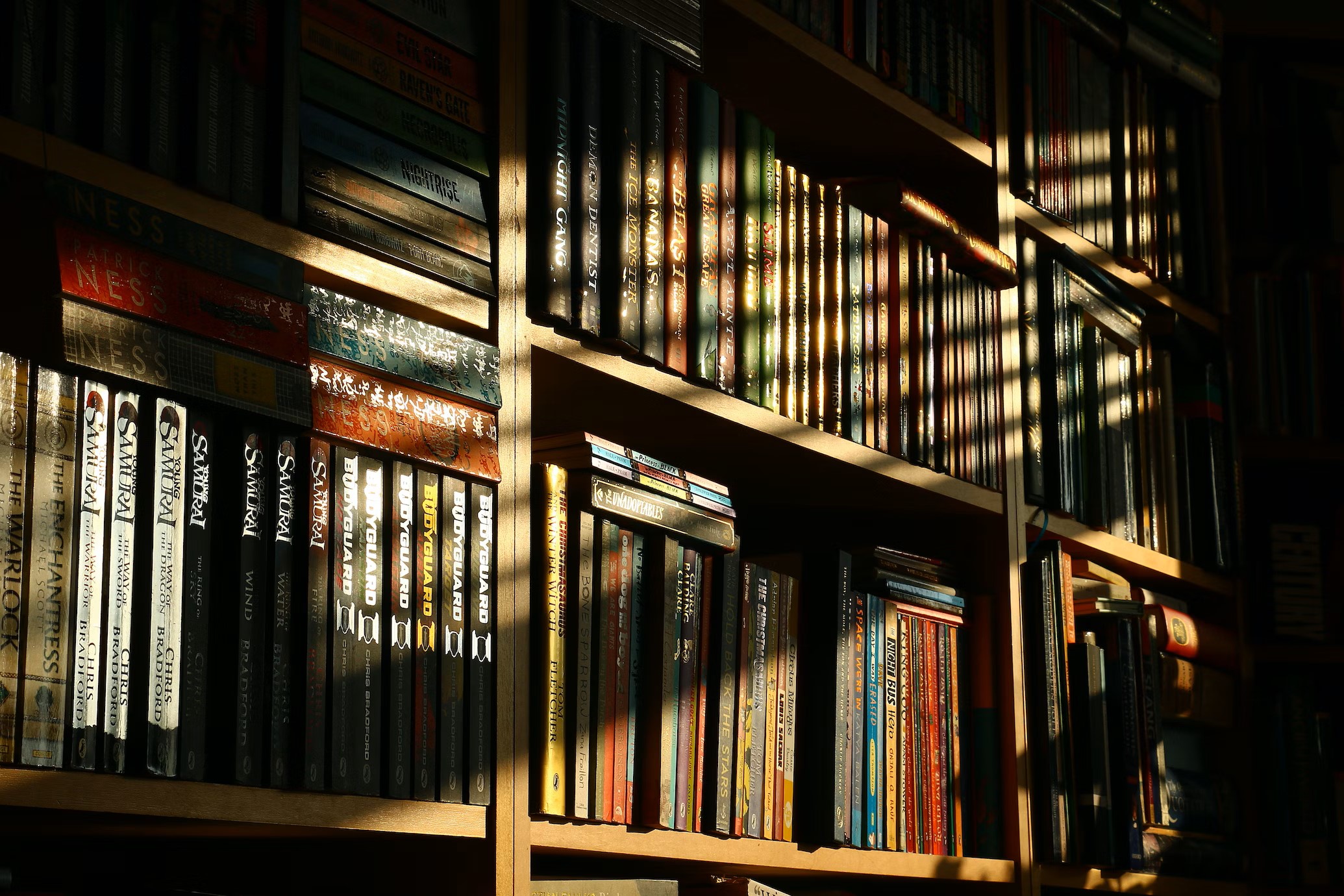
Reading is a beloved pastime, making bookcases an essential element in any interior decor, whether in an urban setting or a more remote location. Homes and apartments frequently feature designated home libraries to house diverse books. These libraries are commonly situated in rooms like studies or living rooms but can also be found in other areas of the house in a more compact version, often referred to as bookshelves. These shelves can be placed creatively in a residence’s most unexpected private nooks.
Purposes of Buying a Bookcase
The function of acquiring a bookshelf for a home library is a key aspect of home decor. Primarily, it serves as a storage space for books and means to enhance the aesthetic appeal of a room while also showcasing a personal book collection to guests. Beyond books, these shelves can also display cherished souvenirs, photographs, and small sculptures. Traditional wooden bookcases add a cozy feel to any space, with their soothing scent and variety catering to adult and children’s areas.
It is advised that the home library should not be used to store dishes, household items, clothing, or toys; these are better suited for storage in a wardrobe. Choosing the right bookcase should align with the homeowner’s requirements, ensuring that finding a specific book is quick and easy. Ideal locations for placing a bookshelf include:
- work office
- children’s room
- living room
- entryway
- corridor
- bedroom
However, there are places where setting up a home library is not advisable, such as the kitchen or other areas used for food preparation, uninhabited attics, and basements. Additionally, avoiding areas with high humidity is crucial to prevent mold and mildew damage to books and potential rodent issues.
Bookcases Varieties for Your Home Library
Not all homeowners have the luxury of dedicating an entire room to a vast, custom-built bookcase to house their library. Therefore, the owners of apartments with small areas have to look for a corner for the shelves and other furniture, such as a chest of drawers, sideboards, and display cases. These shelves must be placed for easy access, ensuring they blend seamlessly into the decor without detracting from the home’s aesthetic.
The diverse bookshelf models available perfectly fit any specific need and architectural style. Even standard bookshelves can have a variety of design choices.
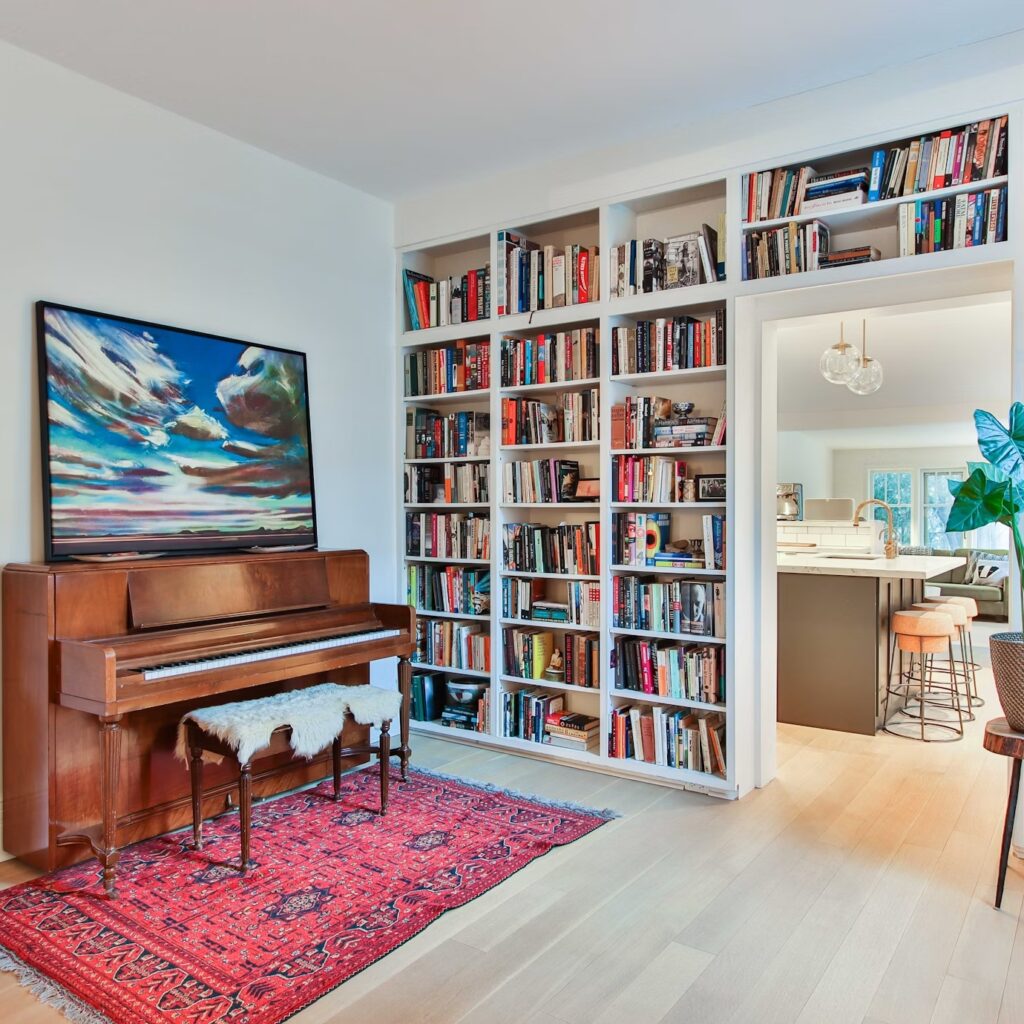
For example:
- Take the living room: a bookcase designed like a pen case or divider is ideal, as it can be positioned against the wall to maximize space.
- Bookshelves, arranged in a staggered order, are a unique and adaptable option for your home library, allowing not just for books but also for displaying nostalgic photographs and cherished decorative items.
- A compact bookcase with sliding drawers suits the bedroom or living room. The upper sections are perfect for books and magazines, while the lower drawers can hold various items. These bookcases come in single-door and double-door varieties, catering to different preferences and needs.
- Specific models feature built-in sliding doors, merging well with comprehensive home library systems, especially in smaller rooms where efficient space utilization is crucial. These units can accommodate everything from newspapers and magazines to an array of books, ensuring that accessing your collection is hassle-free.
- Bookcases for home libraries also play a crucial role in preserving your collection, safeguarding it from dust, UV exposure, moisture, and drying. Sliding designs not only save space but also enhance the room’s decor.
- For compact spaces, a corner bookcase is an ideal solution. It can hold a substantial collection while still leaving room for decorative elements.
- Modular bookcases, composed of separate sections, are easily disassembled and relocated. Adding more modules is straightforward if you wish to expand your collection or alter its appearance. This type of furniture is particularly practical for those who move often, as it is easily transportable.
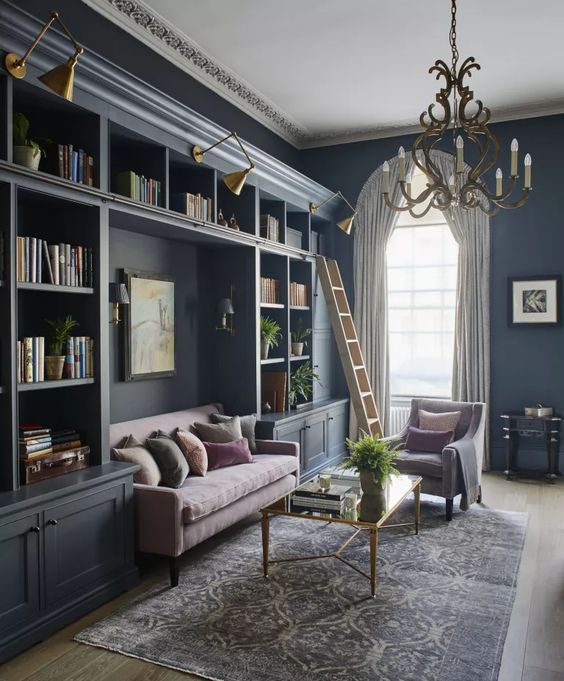
- For avid readers with extensive book collections, dedicating a separate room styled classically with shelves lining the perimeter is a dream come true.
- In rooms with high ceilings, step-ladders or ladders help access higher shelves. Adding a desk and comfortable chair in such a room creates a welcoming, cozy environment for both guests and residents.
- Some inventive homeowners repurpose display cabinets, typically used for dishes and decor, as stand for rare and valuable book collections. This showcases the library and reflects the owner’s literary interests and sophistication. For those preferring a more private display, closed cabinets are a suitable choice.
- Today’s combined models offer a stylish, space-efficient solution for home libraries. These units blend two types of furniture, often separated by a partition, allowing a bookcase to seamlessly integrate with a wardrobe, creating a harmonious and balanced interior. This furniture resembles a modular wall, with bookshelves functioning as a sleek, integrated unit.
- The wardrobe-style bookcase features a closed design, ideal for storing books and other items. It integrates well into living room and bedroom interiors, and when placed in a hallway, models accommodating a TV are recommended. These bookcases also provide space for other electronics and decorative elements like framed photos and sculptures, adding to the stylish appeal of your home library.
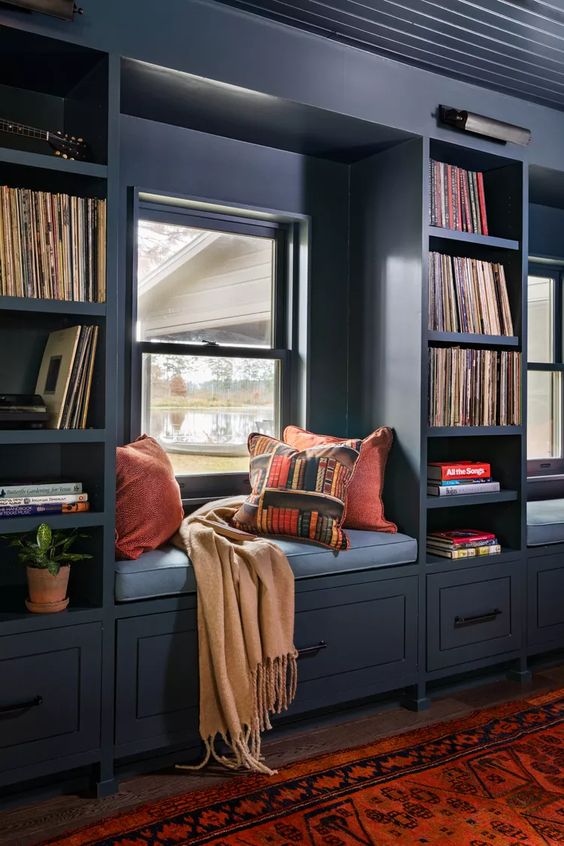
- For children’s rooms, a combined model is an excellent choice. It accommodates not just books but toys as well. With shelves for books and spaces for toys and other child-friendly items, this design helps organize a child’s space effectively, often incorporating a closet and a computer desk for a comprehensive workspace solution.
In summary, a wide array of bookcase styles and designs suit every room and requirement in your home, ensuring your library is well-organized and reflects your personal style and space considerations.
Selecting the Style for Your Bookcase
When picking out a bookcase, it’s crucial to consider its functionality and how its style harmonizes with your room’s overall aesthetic and theme.
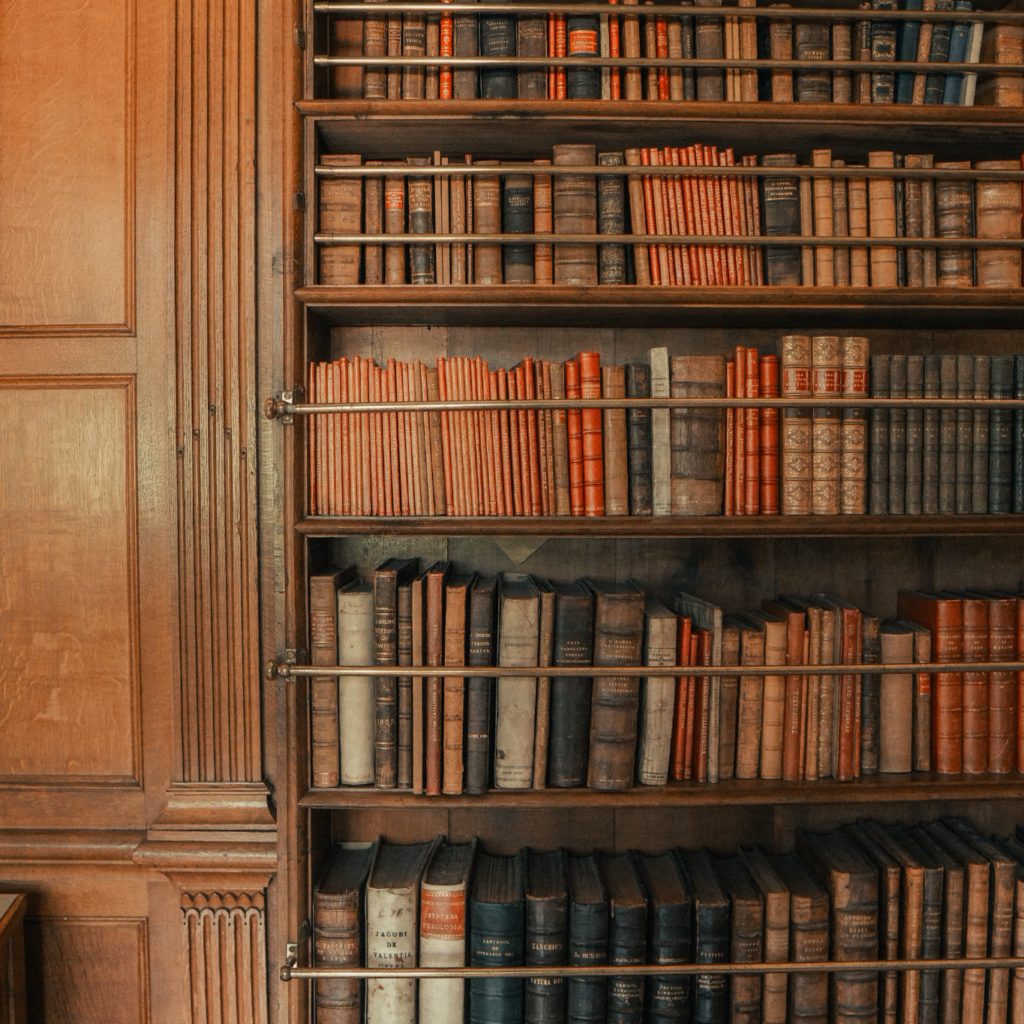
Classic Style
For spaces adorned in classic decor, such as libraries or rooms maintaining a traditional vibe, selecting furniture that echoes this style is essential. These pieces are typically crafted from high-quality natural wood and often embellished with intricate carvings.
In a classic home library setting, the bookcase should be complemented with suitable reading nooks featuring work or coffee tables, plush couches, sofas, and armchairs.
Modern Style
The modern style is uncommon in interior design, primarily because it demands exclusively handcrafted, exquisite furniture. Ideally, bookcases in the modernist, art nouveau vein should be fashioned from premium natural wood. These pieces are celebrated for their sophistication and elegance, characterized by smooth lines and an absence of rigid forms.
Loft Style
A slightly disheveled look is a hallmark of the loft-style bookcase. This can be manifested through irregularly arranged shelves. Staggered shelving units are a smart choice for a home library in this style. Opting for larger, darker-colored designs can complement the loft aesthetic effectively.
In essence, your bookcase’s style should reflect the functionality and integrate seamlessly with your room’s decor, enhancing the overall ambiance of your space.

Country and Provence Styles
Bookcases that align with the country or Provence styles should be wooden. The defining feature of this furniture is its simplicity of design. The natural appearance is accentuated by an absence of paint, with some pieces featuring milled facades that may include solid, glass, or latticed inserts. Simplicity and rustic charm are key attributes of this style.
For rooms styled in French Provence, it’s advisable to select bookcases that convey a sense of age. These are often symmetrical, low, and narrow cabinets in lighter shades with precise geometric shapes. Open-shelf bookcases and closed facades at the bottom are recommended for this style.

Creating Custom Storage Solutions for Books
Furniture crafted for home libraries is often made in limited quantities, ensuring a distinct and remarkable character. This allows for the customization of pieces to suit individual preferences and room styles. Designers endeavor to use various materials, forms, colors, and designs in their creations to make each home library reflect the homeowner’s unique personality and taste.
Bookcase Dimensions for Your Home Library
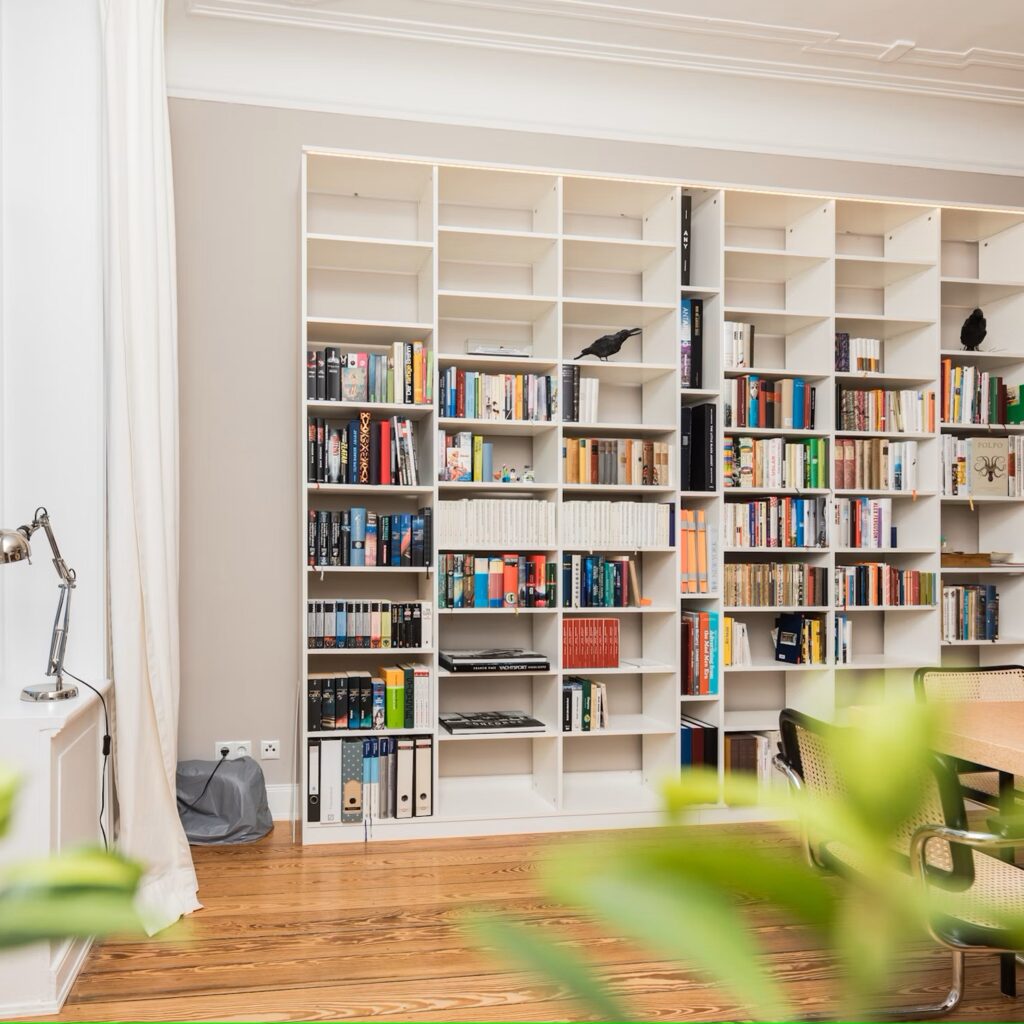
- When setting up bookcases in a home library, it’s essential to ensure they blend seamlessly into the room’s decor, maintain a tidy appearance, and are not overly bulky while still fulfilling their purpose.
- Homeowners should assess the dimensions of existing furnishings and select an appropriate room for the bookcase. Creating a preliminary design sketch can be immensely helpful in visualizing how the new bookcase will integrate with other items in the room.
- A key aspect to consider when choosing a bookcase is the depth of the shelves, whether it’s a built-in or wall-mounted unit. This depth is crucial as it determines how many rows of books can be accommodated.
- Design experts often recommend arranging books in a single row for easy access and to minimize retrieval time and inconvenience. However, if your collection includes unusually sized items, this should be factored into your choice. The most effective shelves are those that remain stable and don’t sag under the weight of books.
- If off-the-shelf furniture doesn’t suit your specific needs or your book sizes vary significantly from standard dimensions, you might need a tailored storage solution. This could involve purchasing a custom-designed bookcase.
- Music enthusiasts collecting vinyl records may also find that standard bookcases must meet their needs due to their unique sizes and shapes. Therefore, the same custom approach recommended for unique home libraries can be applied to accommodate music collections.
- A wall-mounted bookcase is ideal for spaces that cannot accommodate large structures. These bookshelves are compact, sparingly using space, and can be conveniently installed above desks or computer tables.
How to Coordinate Bookcase Color with Room Decor?
Ensuring that the color of your home library bookcase complements the other elements in the room is critical. The bookcase’s color must perfectly match the room’s interior and style.

- In a classically styled room, consider bookcases in wenge – a dark, rich tone that exudes luxury. The appeal of natural wood shades remains strong, offering options like gray, brown, beige, and various hues of red and yellow.
- For those aiming to make the bookcase a focal point and draw guests’ attention, experimenting with a mix of colors in one piece is a viable option. This can include contrasting colors for the bookcase’s exterior and interior components (shelves, racks).
- In more formal and structured rooms, bookcases in black or white can be a fitting choice. Combining these contrasting colors in a single piece can create a striking effect.
- Brighter colors are a great choice when selecting bookcases for children’s rooms. Green, blue, or yellow hues can enliven the space. For a softer look, consider gentle shades like sky blue, light peach, or pale pink, which can bring a serene and delicate touch to the room.
Materials for Crafting Home Library Bookcases
The variety of materials used in constructing a home library bookcase can vary, with wood often being the top choice for its quality.
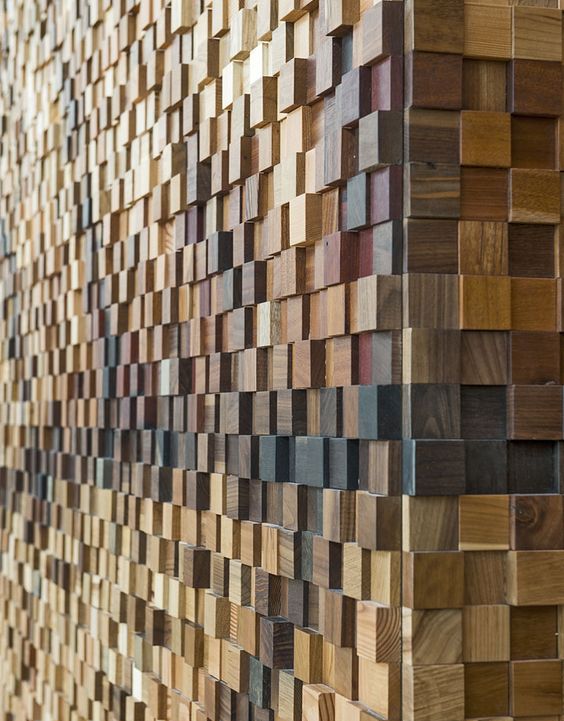
- A family’s prosperity and social standing can be showcased with bookcases made from esteemed woods like oak, soft pink beech, mahogany, or ash.
- Consider, for instance, an antique beech wood bookcase, which promises durability and adds a touch of mystery to the room. Cherry wood stands out for its carving ease, allowing various shapes to suit the designer’s vision.
- Bookcases featuring drawers and open wooden shelves are aesthetically pleasing and boast exceptional durability, promising many years of service.
- For those on a larger budget, high-quality MDF is a viable option for the bookcase’s structure.
- The doors often incorporate frosted or clear glass, treated with specialized compositions for enhanced impact resistance. These glasses are designed to shatter safely during breakage, minimizing the risk of injury from scattered fragments.
- Some manufacturers also incorporate mirrors into their designs, like a display case with an internal mirror, offering a complete view of its contents.
- In wardrobe-style bookcases, sliding doors with glass inserts are commonly used.
No matter the choice of a bookcase with drawers or doors, ensuring robust shelving systems that can bear the weight of all intended items is essential for functionality and safety.
Selecting the Ideal Bookcase for Your Home Library
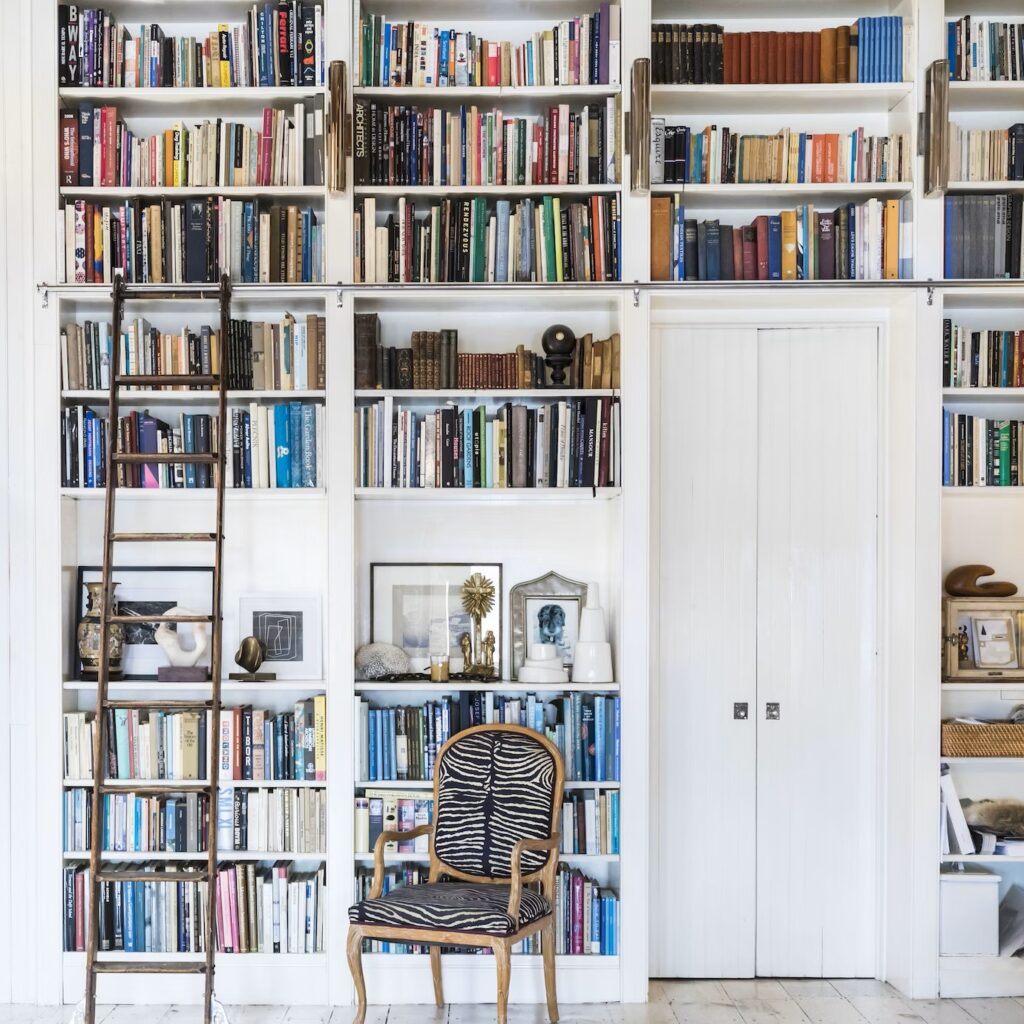
Finding the right bookcase for your home library involves more than just a simple choice; it requires careful consideration of various aspects. Key factors include the design attributes, construction materials, color palette, and overall style, as well as the size and placement of the bookcase or shelving unit. These considerations will be further explored.
Match the bookcase to your room’s decor theme. For instance, a Provence-style bookcase blends seamlessly into a country-themed interior. Consider designs that complement artificially aged floral wallpapers and wicker chairs for a vintage feel. There’s a suitable bookcase option for every interior, from traditional to contemporary styles.
Home libraries come in diverse styles, so finding the perfect match for your space is important. Plan the arrangement of your books, considering which titles you’ll access frequently and which will remain on the shelves longer.
Closed bookcases are ideal for seldom-used books as they protect against dust and UV light. Conversely, open shelves are better for books you need to access regularly.
It could be an ideal spot for your home library if your attic is free from high humidity and pests. It offers a quiet, undisturbed space perfect for losing yourself in a good book.
No matter the size of your collection, you can tailor any space to store it. Utilize unused walls or spaces beneath window sills creatively to enjoy your new bookcase and the process of designing your reading nook.
Optimal Placement for a Home Library Bookcase
Work Office Library
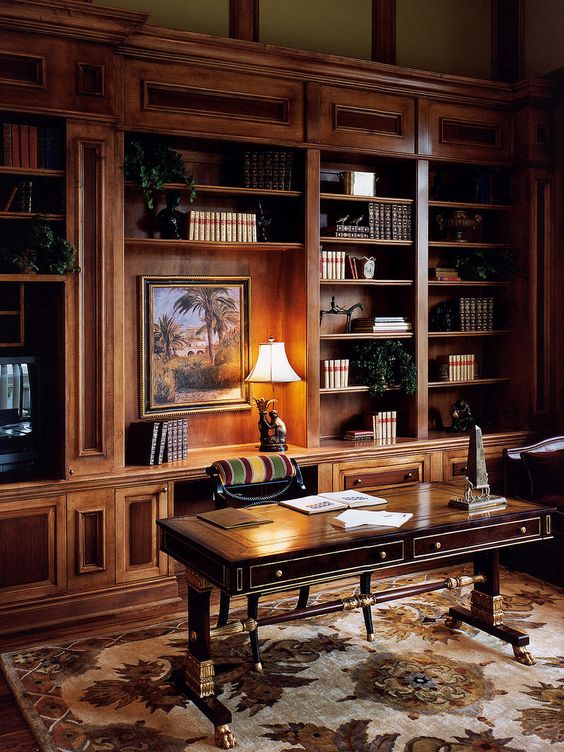
Home bookcases and shelves typically find their place in a work office, ideally stocked with professional severe or academic literature to reflect the owner’s status and intellect.
For a bookcase that blends into the environment rather than standing out as the focal point, consider situating it along a wall or within a corner setup.
When selecting a bookcase, prioritize quality and durability. Solid wood bookcases are the most sought-after due to their longevity and aesthetic appeal.
Bookcase in the Living Room or Dining Room
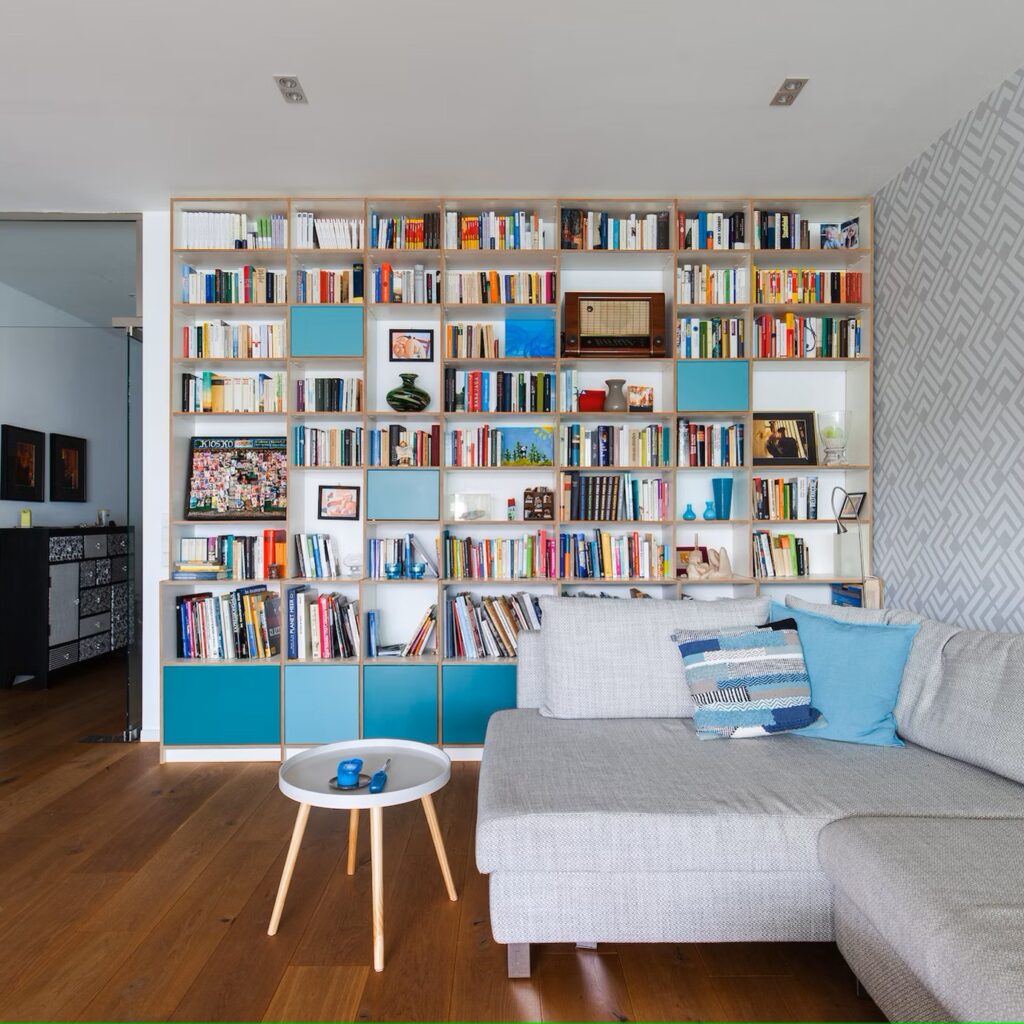
In these l places, contemporary literature like romance novels or detective stories is suitable. Aim for a balance in your home library – not overly academic to avoid seeming pretentious, but steer clear of books with inappropriate content.
Choose engaging but respectable literature, showcasing refined taste while keeping the collection approachable and exciting.
Children's Literature and Study Materials
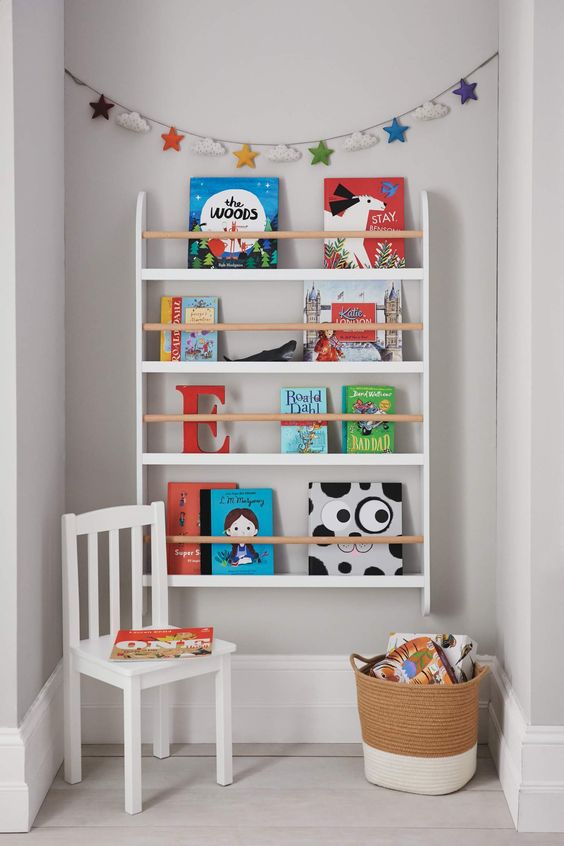
Books are often displayed on small, typically wall-mounted shelves in a child’s room. The placement height is crucial for safety and accessibility.
Ensure children don’t have to climb furniture to reach books to avoid accidents. Install the shelf at a height easily reachable for the youngest family member, adjusting it as they grow.
Consider a floor-to-ceiling bookcase in the nursery, with children’s books on the lower shelves and more mature titles higher up.
Bookcase in the Corridor or Near the Stairs
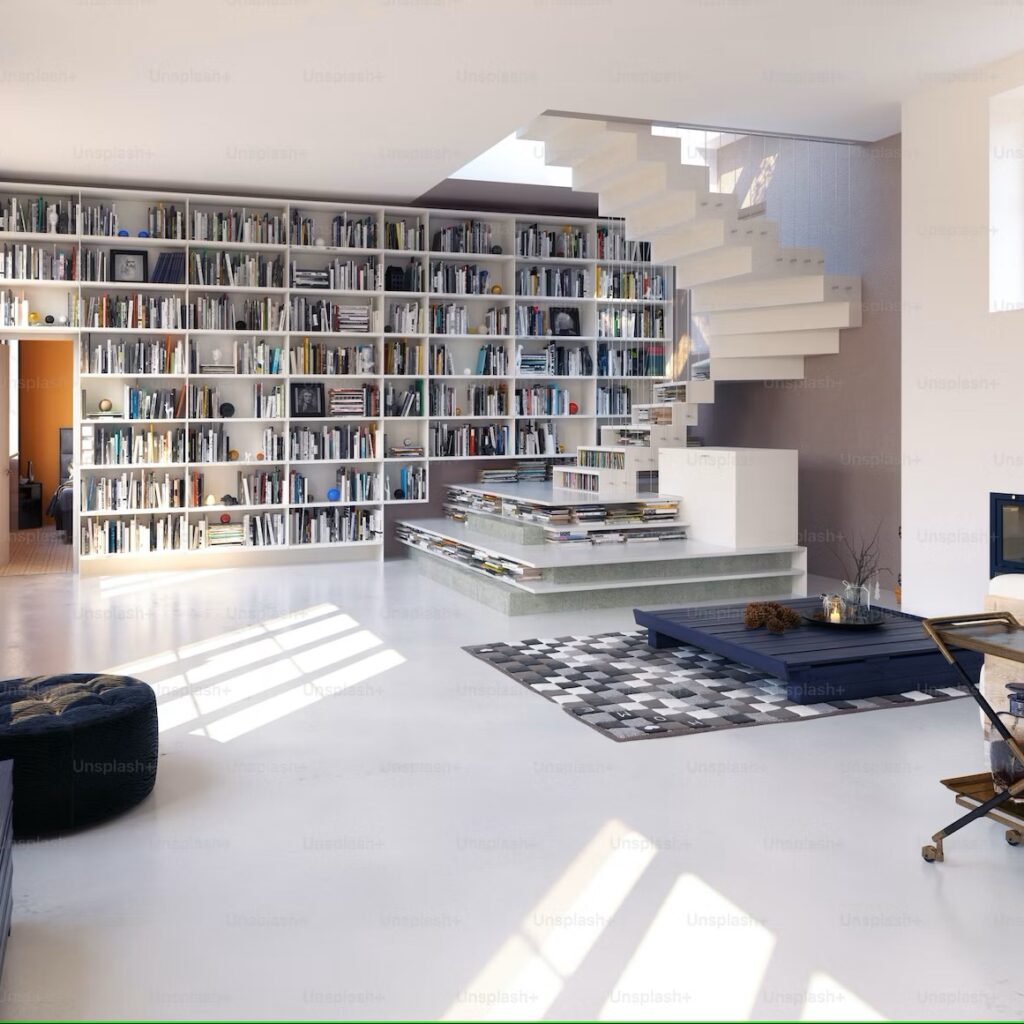
Open shelving with single-row book arrangements is practical for space-saving in these areas. Opt for books with bright, eye-catching covers to add a touch of flair to these transitional spaces, enhancing the aesthetic of your home’s interior.
In conclusion, curating the perfect home library in a modern interior is a blend of thoughtful consideration of space, style, and functionality. The choice of bookcases, pivotal in this endeavor, is not just about housing a collection of books but about creating an ambiance that reflects personal tastes and complements the home’s decor.
